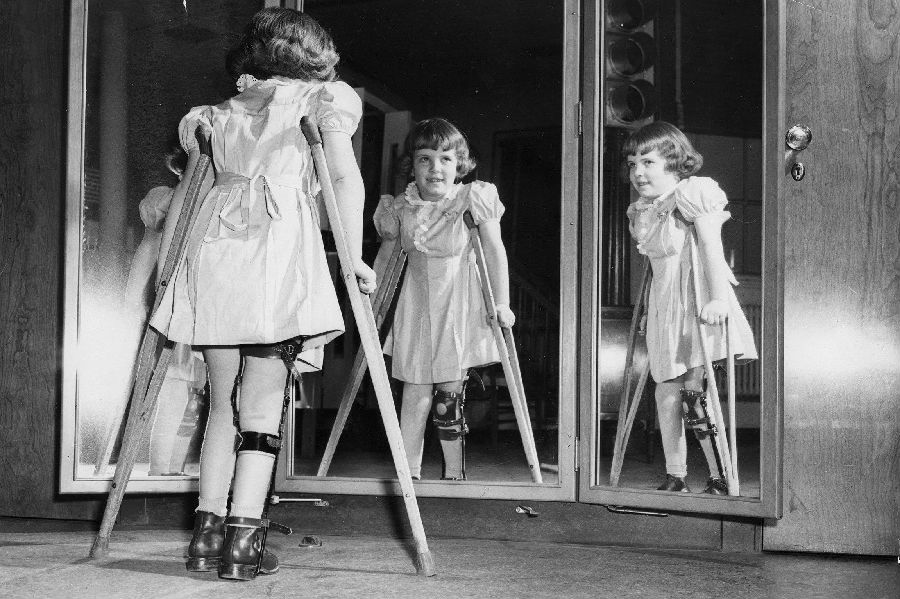In Kolmer's case, the vaccine involved using a weakened poliovirus,
科尔默的疫苗是用不会引发脊髓灰质炎症状,
one that wouldn't cause symptoms but would still confer immunity.
但依然能激活身体的免疫系统的脊髓灰质炎病毒制成的减毒活疫苗。
In the case of Park and Brodie, the technique involved a killed virus that would work more or less the same way.
帕克和布罗迪利用的则是已经被杀死的,但工作方式与科尔默的病毒大致相同的病毒。
Nine thousand children were injected with the Park-Brodie vaccine that summer, and 10,000 with Kolmer's version.
那年夏天,9000名儿童注射了帕克-布罗迪疫苗,另有1万名儿童注射科尔默版本。
Both were disasters, in some cases causing the very polio they were intended to prevent,
结果,两人的方案双双变成了灾难,部分儿童注射疫苗后不仅没能免疫,反而染上了脊髓灰质炎,
in others leading to infections and inflammations.
一些儿童出现了感染、炎症等症状。
Six children died of vaccine-caused polio.
还有六名儿童因为疫苗染上了脊髓灰质炎最后不治而亡。
In November, Kolmer and Brodie were summoned to the annual meeting
同年11月,科尔默和布罗迪两人被传唤到了美国公共卫生协会的年会上,
of the American Public Health Association for an open shaming delivered in twin reports,
并以两份报告的形式对他们进行了公开的声讨,
one of which ended with the damning conclusion that Kolmer might as well be guilty of murder.
其中一份报告甚至在结尾表示,应该判科尔默谋杀罪。
“Gentlemen,” Kolmer said in response, “this is one time I wish the floor would open up and swallow me.”
“先生们,”科尔默回应说,“我真的恨不得找个地缝钻进去。”
It would be another 20 years, until 1955, before Dr. Jonas Salk would develop a successful killed-virus vaccine.
又过了20年,也即到了1955年,真正有效的灭活疫苗才被乔纳斯·索尔克医生研制出来。
That meant 39 years between the epidemic of 1916 and the moment when science would at last have its way with the disease.
这就意味着科学最终攻克这种疾病的那一刻距离1916年疫情爆发已有39年。

Americans in lockdown now might seem almost spoiled
相比之下,现在正在经历封城和隔离,
to be chafing at being told to wait up to 18 months before a vaccine against SARS-CoV-2 becomes available
被告知18个月后才能拿到SARS-CoV-2疫苗时还嫌不够快的美国人未免矫情了些
(though optimistic projections suggest that the breakthrough could come as early as January).
(尽管乐观的预测表明,疫苗研制工作最早来年1月份就能取得突破)。
But as science changes, expectations do too.
不过,科学在发展,人们的期望值也在变。
We can now make vaccines faster than ever.
如今的疫苗研制速度比以往任何时候都快。
Still, some things remain the same.
但有些东西还是没变。
Americans separated by scourges more than a century apart share the same fear,
一个多世纪前的美国人经历的恐惧,担忧,隔离的孤独之感以及亲人被疫情夺走的悲痛,
the same worry, the same loneliness in lockdown and grief for lost loved ones.
今天的美国人一个都没落下。
Diseases don't change their character, and human beings don't much either.
疾病的性格不会变,人的性格又能变到哪里去?
But science presses ahead, and in our impatient 21st century,
好在,在这个浮躁的21世纪,科学总在向前,
that's something for which we should be deeply grateful.
我们应该为此充满感激才是。
译文由可可原创,仅供学习交流使用,未经许可请勿转载。












